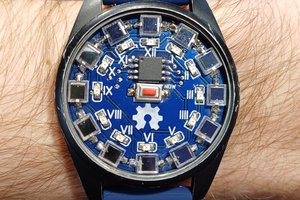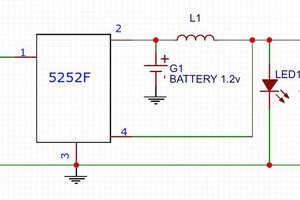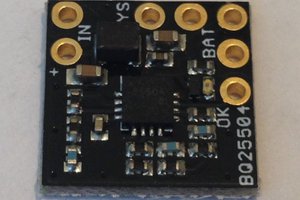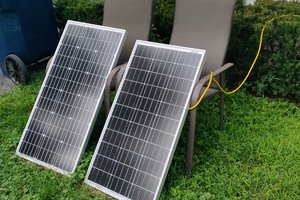For $0.99, you can purchase a small calculator from any dollar store, powered by a single alkaline coin cell battery. After seeing one of these at the store, I purchased it and after some measurements determined that it only consumes around 2 microwatts in standby (~1.5 microamps). This was so incredibly low that I realized it could actually work on my old Tritium nuclear battery (even if you still had to store up the produced electrical energy for awhile for it to work). The calculator is able to run on such low currents by using a simple LCD with no backlight.
Because I disassembled my original nuclear battery months ago, I quickly recreated it in a smaller package (you can see my original post, linked below, to see the idea behind this). To keep light out (to ensure that I was only producing energy from the radioactive decays) I used alternating layers of electrical tape and aluminum foil, with the initial layer being foil to act as a light reflector. This worked extremely well, successfully blocking all light as well as being slightly more efficiency than my original design in the altoids tin (producing 1.8V open-circuit voltage, 200mV more than the original). The solar cell collects the green light produced by a phosphor lining the tube walls, which is excited by the impacts of 5-10 keV beta radiation from Tritium decays.
To store the energy, I used a 100 microfarad capacitor (any rating above 2 Volts will work). At maximum charge, this results in a whopping total stored energy of ... 162 uJ (microjoules), of which the calculator can only use 130 uJ as it cuts off at around 0.8 V (the original battery was 1.2 V nominal voltage, which I've found is actually too low for the calculator to have a properly visible screen. Therefore, the max 1.8 Volt charge will not harm the calculator and will enhance performance and on time).
And that's it! A switch was added so that you can discharge the capacitor into the calculator. After using a lot of hot glue to stabilize the calculator without its original backplate and soldering everything together, the device was finished, and works well for the 30 seconds it can function at a time. I estimate that around 5 Tritium tubes inside a single solar cell would produce enough energy to continuously use the calculator due to efficiency gains from increased light.
As for safety, obviously don't break the tube, as you will be releasing around 3 billion decays per second worth of H-3 into your vicinity if you do this. If you do somehow break the tube, leave the area for an hour or so and ventilate the room. The tube itself does not produce detectable or dangerous ionizing radiation due to the glass tube walls blocking all of the beta and X-ray radiation. See main nuclear battery post for more safety notes.


 Serhii Trush
Serhii Trush
 Tauno Erik
Tauno Erik
 Kris Winer
Kris Winer
 Drew Pilcher
Drew Pilcher
i like it!
although the battery is quite new to me, it seems fun! thank you for the idea, ill be following more of your work~